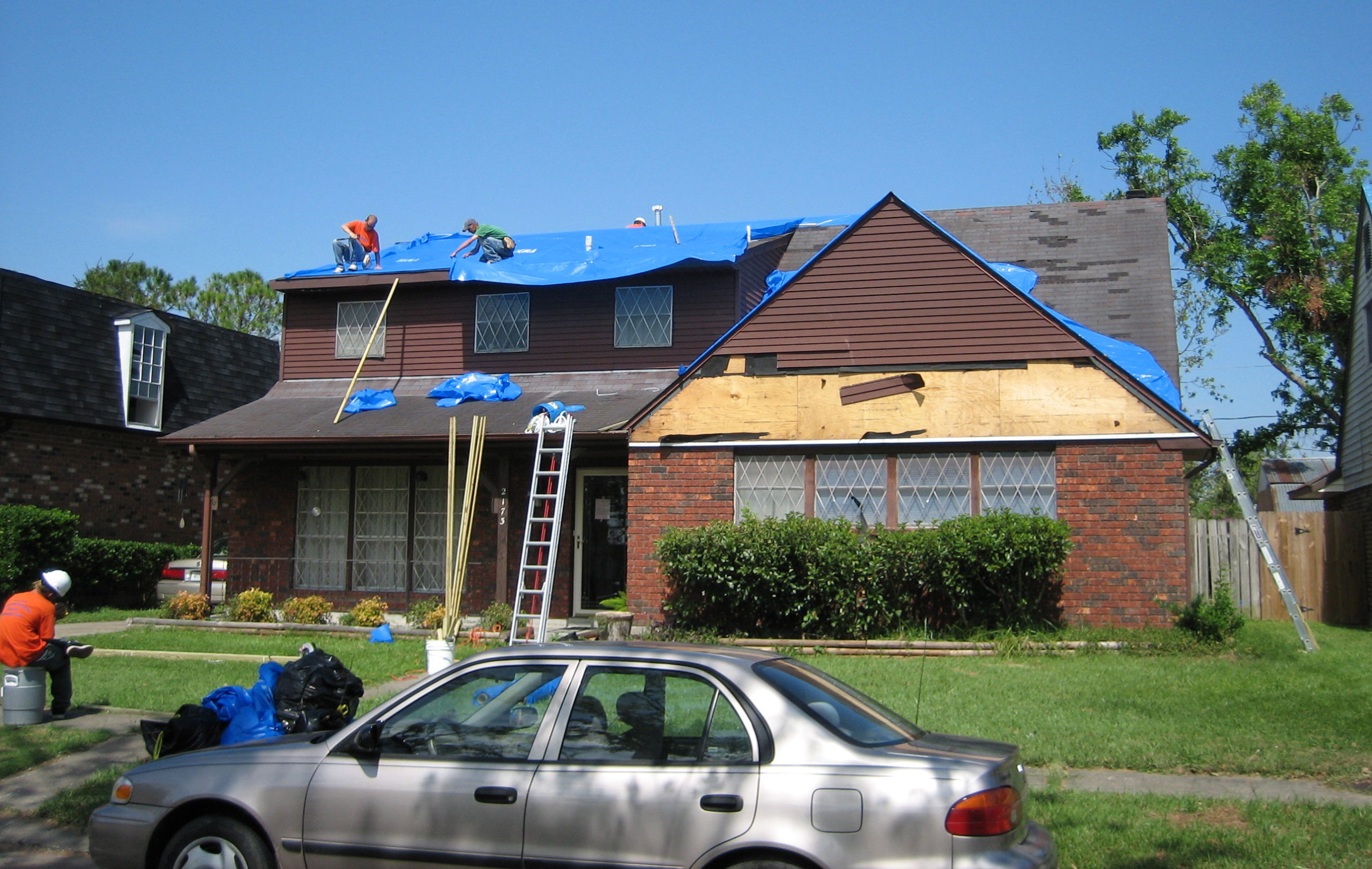
We are an emergency roof tarp installation company that provides services in North Star. Call now for a free estimate.
Benefits of Roof Tarping
Roof tarping is a crucial temporary measure for protecting a building from further damage after the roof has been compromised due to events like storms, fires, or other disasters. Here are some key reasons why roof tarping is helpful:
1. Preventing Water Damage: The primary purpose of tarping is to prevent water from entering the building. This is especially important if the roof has been damaged by a storm or other incident that creates openings. Water entering through a damaged roof can cause significant damage to the interior of a building, including the walls, ceilings, electrical systems, and personal property.
2. Mold Prevention: By keeping out moisture, tarping helps prevent the growth of mold and mildew. These can be harmful to health and can also cause further damage to the structure and contents of the building.
3. Temporary Solution: roof tarp installation is a quick and effective temporary solution to protect a building until permanent repairs can be made. It is not meant as a long-term fix, but it provides immediate protection against the elements.
4. Insurance Requirements: In many cases, insurance policies require that reasonable steps be taken to mitigate further damage after an incident. Tarping a damaged roof can be a necessary step to comply with these requirements and ensure that insurance claims are not jeopardized.
5. Safety: A damaged roof can pose safety risks, such as the potential for falling debris. Tarping can help secure loose materials and reduce the risk of injury to occupants and passersby.
6. Quick Deployment: Tarp installation can usually be done quickly, which is crucial in emergency situations where immediate action is necessary to prevent further damage.
Reasons You Might Need Roof Tarping
Here are common scenarios when tarping is necessary:
After Severe Weather Events: Weather events like hurricanes, tornadoes, strong winds, hail, and severe thunderstorms can cause significant damage to roofs. Tarping is essential until repairs can be made to prevent water from entering the building.
Fire Damage: Tarping might be necessary after a fire to protect the building during the restoration process.
Fallen Trees or Debris: Storms can cause trees or large branches to fall on roofs. Tarping is needed to cover these openings after the tree or branches have been removed.
Delayed Repairs or Construction: Roofs often need to be temporarily covered to prevent water damage during the roof construction or repair process.
Preventive Measures: If a roof is already in a compromised state (like missing shingles) and a storm is forecasted, homeowners might opt to tarp the roof as a precaution.
The Average Cost of Roof Tarping Services
Most of the roof tarping jobs we do cost around $1,200 to tarp, but the cost of roof tarp installation can vary significantly based on several factors. Below are the key elements that influence costs:
Size of the Damaged Area: The larger the area that needs to be tarped, the higher the cost.
Complexity of the Roof: Complex roofs may require more labor and safety equipment to tarp.
Urgency and Timing: Emergency tarping services cost more than tarping services that can happen on a non-emergency basis.
Labor Costs: The cost of labor varies significantly depending on the average cost of living in the area.
Type and Quality of Tarp Material: Some tarps are more expensive than others based on how heavy duty they are.